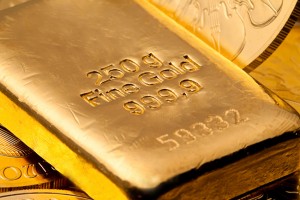
Something that is made using gold is almost never one hundred percent gold.
However, it is not always easy to know how much gold is actually in any particular “gold” item, and that is something that can become incredibly relevant when it comes to buying, selling, and investing gold assets.
Gold Melt Value is a term mostly used to help specify the value of an individual gold item, but how does it apply to gold items you own? More importantly, how much does it matter when looking into the total value of an item that is partially gold?
Understanding Gold Melt Value
First of all, gold melt value does not refer to a market average price of gold. It is a value based on the physical volume of gold in a particular item – the value that the gold would offer if it were melted down into a simpler form.
Gold has its own specific value, but that does not mean that any item containing gold reaches that value. Something that is 50% gold and 50% silver will be valued based on each 50% – the total value is based on the ratio of gold compared to other substances.
Another good example is coins. Modern coins that contain gold can be valued based on the amount of gold they contain, with the other materials being there to bulk out the shape and ensure that it is not just a tiny nugget of gold. This means that most of the value comes from the coin itself, at least in theory.
As the name suggests, gold melt value is based on the value that the item would be worth if one were to melt the metal down. This is meant to be the most “raw” way of valuing gold since you are looking at the gold itself as the only real source of value.
Is Gold Melt Value always higher?
Gold melt value is not always accurate to the amount that an item is valued on the market, but this always depends on what the item actually is.
For example, an antique or attractive heirloom can be worth more than its old gold melt value due to craftsmanship or uniqueness. In other cases, it might be a collectible item or something that multiple people are willing to bid for at a high-stakes auction. This all depends on the item’s value to the people willing to sell or purchase it.
Of course, gold melt value can sometimes be higher, too. For example, an item might be seen as incredibly ugly and hard to melt down into its component metals, meaning that it has a lot of value as gold but is not necessarily going to earn as much value on the market.
Either way, gold melt value is all about looking at the pure value of a gold item after reducing it to melted gold. Thankfully, you do not need to melt down an item to understand what kind of melt value it offers.
Determining Melt Value
Melt value can be calculated by multiplying the weight of the item by the percentage of gold it contains, then comparing it to the current value of an ounce of gold. An item that’s 100% gold and weighs one ounce would be the same gold melt value as an item that is 50% gold and weighs two ounces.
This means that almost any item can have its melt value determined, but only if you know two basic facts about the item: how much it weighs and how pure the gold is.
Weight
Weighing gold is easy enough, although it is important to note that gold ounces are not always standard ounces. Some places sell gold by the “troy ounce,” which is around 10% heavier than a normal ounce at 31.1 grams. This is something you may need to factor into the process.
Getting a gold item weighed can be easy, but many people turn to professionals for that extra granularity. Larger items often need to be weighed with specialized equipment anyway.
Purity
Purity is the amount of gold an item contains. Anything over 99% pure is effectively pure gold and is therefore worth the full amount per ounce, but this does not usually apply to most items beyond pure gold bars or simple, pure gold rings.
Evaluating the purity of a gold item takes specialized skills and tools, meaning that the average person needs help to do it accurately. Knowing the purity of an item is important to determining the melt value involved.
For example, let us say you are looking for the gold melt value 14k gold can offer. A piece of jewelry that is only 90% gold and 10% silver will have a gold melt value of 90% of its own weight in gold since 10% of that weight is effectively silver. This means that 10% of each ounce is usually ignored unless the melt value of the silver is being accounted for too.
Why Melt Value Matters
Melt value is basically the intrinsic value of your coins, decorations, jewelry, or other gold items. While the price of gold may change, you can’t change the fact that a 90% gold necklace will still be 90% gold.
Melt value makes a difference for both buying and selling. You can use the gold meltdown value of an item to determine if you are paying a premium for it – buying something for £500 and turns out to only be worth £400 in gold, for example. It also provides a good baseline for selling the item since you understand the value it would offer if it were melted down to sell instead.
Generally, you do not want to sell something at a price below what it would be worth to melt down, at least not if you are trying to make a direct profit. If you are selling an item for less than its value, then melting it down would have theoretically offered you more gold melt value.
Of course, this is not always the case. In many instances, melting something down would cost money anyway, so it makes more sense to sell the item. Still, it is an important detail to know, especially if you plan to invest in gold items yourself (or already are).
Read more:
What is Gold Melt Value?






